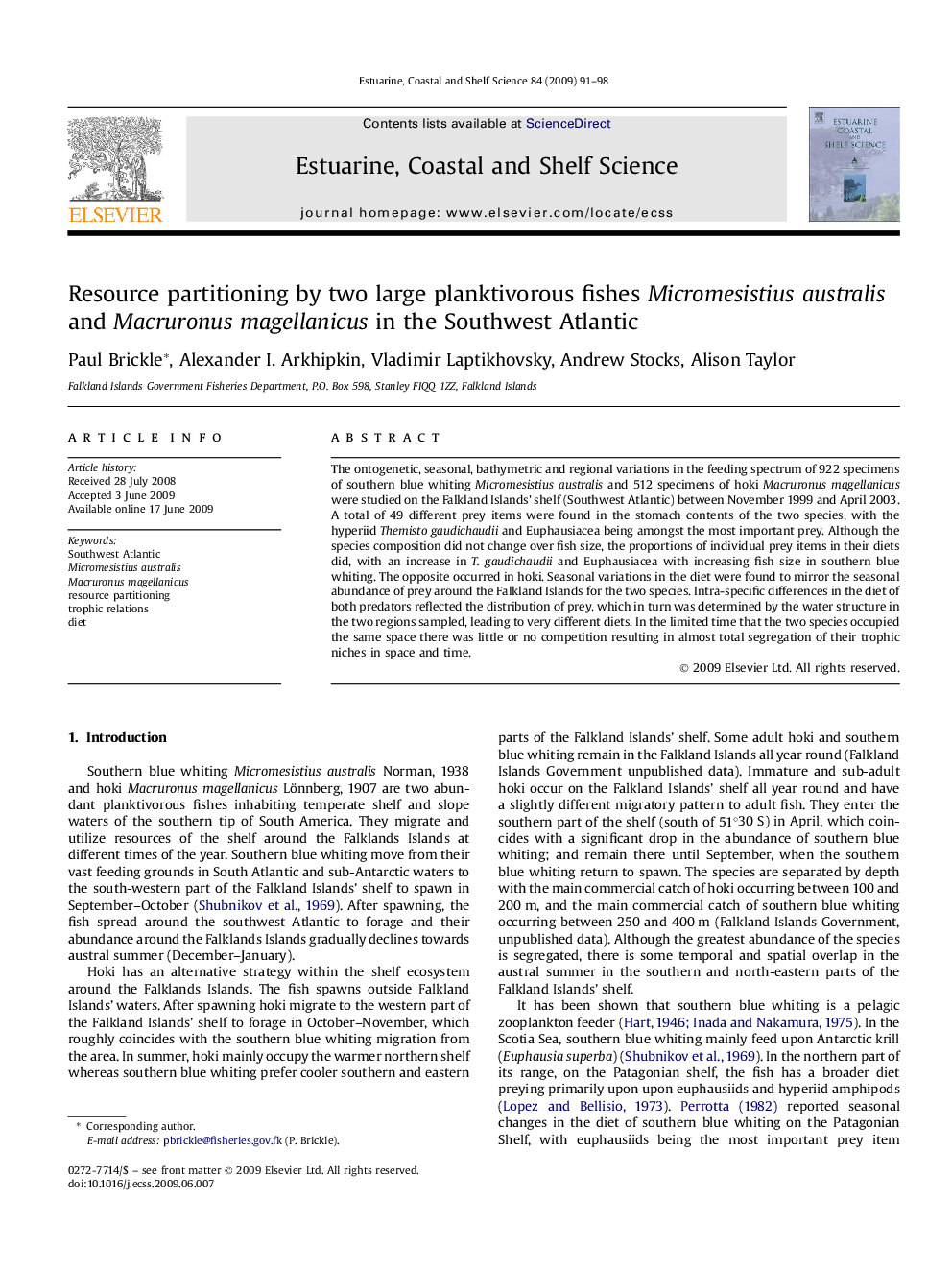| Article ID | Journal | Published Year | Pages | File Type |
|---|---|---|---|---|
| 4541158 | Estuarine, Coastal and Shelf Science | 2009 | 8 Pages |
The ontogenetic, seasonal, bathymetric and regional variations in the feeding spectrum of 922 specimens of southern blue whiting Micromesistius australis and 512 specimens of hoki Macruronus magellanicus were studied on the Falkland Islands’ shelf (Southwest Atlantic) between November 1999 and April 2003. A total of 49 different prey items were found in the stomach contents of the two species, with the hyperiid Themisto gaudichaudii and Euphausiacea being amongst the most important prey. Although the species composition did not change over fish size, the proportions of individual prey items in their diets did, with an increase in T. gaudichaudii and Euphausiacea with increasing fish size in southern blue whiting. The opposite occurred in hoki. Seasonal variations in the diet were found to mirror the seasonal abundance of prey around the Falkland Islands for the two species. Intra-specific differences in the diet of both predators reflected the distribution of prey, which in turn was determined by the water structure in the two regions sampled, leading to very different diets. In the limited time that the two species occupied the same space there was little or no competition resulting in almost total segregation of their trophic niches in space and time.
